David reviews the 1873 Cattleman Revolver and does a little bit of trouble-shooting on factory ammo.

There is probably no better-known handgun in the world than the Colt Single Action Army Model of 1873.
Between its history here in the American West to it being in the hands of the Rough Riders in Cuba, fighting against the Moros in the Philippines, and then even onto the battlefields in Europe. Later of course, the Colt became popular again to the masses when Westerns ruled both television and the silver screen. Of course, hunters, ranchers, working cowboys, and anyone who just knew how to use a handgun as a working tool always appreciated the Colt Single Action Army.
To the uninitiated, many think that the Colt Single Action Army came in only one caliber, that being .45 Colt, which of course, is the most popular offering, it would seem. Yet the 1873 Colt was offered in over thirty calibers, some well known, a few a bit more obscure. Legendary lawman Bill Tilghman carried one in .38 WCF (.38-40), south of the border. The Colt was popular in .44 Rimfire, .41 Colt was another early choice as was .44-40 and .44 Russian & .44 Special.
One of the more popular and sought-after of the Colt 1873 revolvers was chambered in .32 WCF (.32-20). This was in part because of the popularity of rifles like the 1873 Winchester, and later the 1892 Winchester chambered in the same caliber. As most hunters will tell you, having a large caliber when it comes to hunting smaller game like grouse or rabbits is counterproductive, to say the least, when it comes to salvaging the meat.
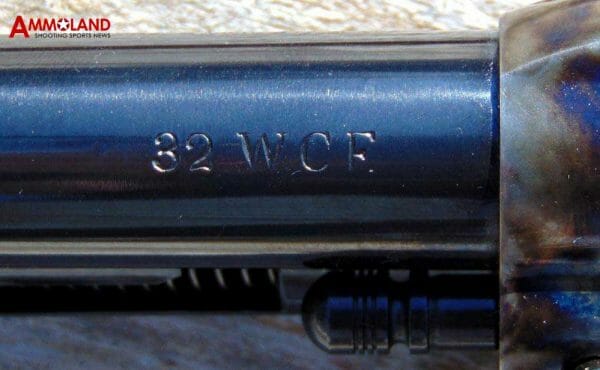
The .32-20 has long been a favorite among some of the great gun gurus of old. The father of modern hand gunning, Elmer Keith once wrote in his book Sixgun Cartridges and Loads;
“Although most authorities condemn this 32-20 for use in revolvers, I found it a very fine little cartridge when properly handloaded. It served me well, and altogether I still have a lot of respect for it.”
Elmer wasn’t the only fan, Skeeter Skelton after he got out of the service following World War II, he acquired a Colt Single Action with a 7 1/2 “ barrel and proceeded to use it on jackrabbits and coyotes in Texas, although Skeeter said that factory loads weren’t up to his hand loads for doing the job.
The .32-20 is a cartridge that does take to handloads like a duck to water, but it also has its limitations. I have loaded the round for some time, and the thin, tapered case neck takes some care so that the case doesn’t get ruined. Factory loads consist of a 100-grain lead bullet, but one of the best is the old Lyman #311008, which is 115 grains. Properly loaded and within safe limits, it easily outperforms the factory rounds.
Taylor’s & Company 1873 Cattleman .32-20 Revolver
Live Inventory Price Checker

|
Uberti 1873 Cattleman Revolver Charcoal Blue 7.5" 345150 | EuroOptic.com | $ 759.50 |
|
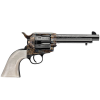
|
Uberti Outlaws & Lawmen "Dalton" .45 Colt 5.5" 1873 Single Action Cattleman Revolver 356718 | EuroOptic.com | $ 1176.00 |
|
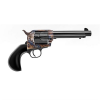
|
Uberti Bonney 1873 Cattleman 45 Colt - Bonney 1873 Cattleman 5.5 Blue Revolver | BattleHawk Armory | $ 929.00 $ 799.99 |
|
If shelling out the big bucks for an original Colt Single Action Army in .32-20 isn’t an option (it wasn’t for me), so I picked up a Taylor’s and Company 1873 Cattleman revolver, which Uberti makes.
I got the 7 ½” barreled version. Even though it’s the standard finish, the case coloring is just gorgeous, the bluing is very deep, and the grips are walnut. The cost of the long barrel model is $548. The Cattleman with the longest barrel weighs 2.6 pounds and is 13.10” overall, but it really doesn’t seem that long. For an extra $148, you can have your revolver tuned at Taylor’s.
The Cattleman is a true clone of the Colt Single Action Army, so unlike a Ruger Vaquero, it’s best to carry the hammer down on an empty chamber. With a live round under that hammer if you were to drop the gun, it could go off by accident. Better to be safe instead of sorry here.
The sight arrangement on the Cattleman is again like the Colt Single Action Army, it has a blade front sight and a notch that serves as the rear sight. While it is simple, it is also very effective, especially once you get used to it. You might have to file down your sight in order to get the gun to hit where you wish it to, depending on the load you use.

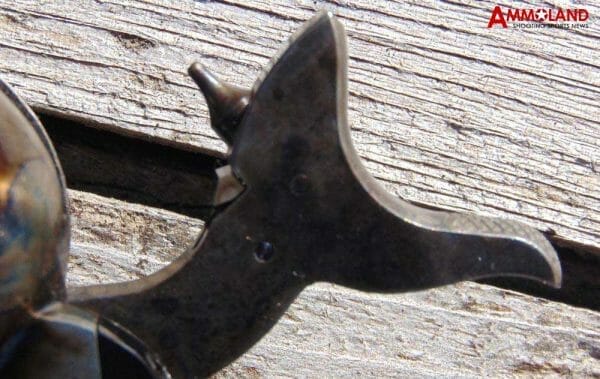
I recently took the Taylor’s & Company 1873 Cattleman Revolver to the range, and I discovered something unusual. I brought with me some factory ammunition, and it was Winchester 100 grain lead rounds. What I found was that some of the rounds bound up the cylinder. At first, I thought there was an issue with the gun itself, but I noticed that some of the rounds would work in the cylinder and some would not. I checked each individual chamber and found that some rounds would work just fine and others wouldn’t. Once I got enough good rounds together, I was able actually to shoot the gun. At 20 yards offhand with the factory Winchester rounds, I found I had to hold the front sight just a bit over the bullseye. Recoil was almost non-existent, and it was pleasant to shoot. The action on this particular gun is silky smooth with no hiccups at all.
I brought a few of my personal hand loads, and since they are loaded with Winchester brass, I found myself having some of the same issues. Some would bind up the cylinder when trying to load the gun, and some wouldn’t. My hand loads consisted of the Lyman 115-grain cast bullet and a light charge of 2400 powder, and the results were much better than the factory ammo. Except for one flier, the rest were all at the point of aim. No sight compensation was necessary.

When I got home, I was determined to figure out if the problem with the Cattleman was with the gun or the ammunition. I had some Remington 100 grain factory rounds, so I tested to see how those would bind up the cylinder, and lo and behold, of the twenty rounds I had on hand, only one gave me an issue.
What I found was that there was a difference in the thickness of the rim between the Remington and the Winchester rounds, and even between the Winchester rounds that worked in the Cattleman and those that didn’t. I measured the cases and I found there was .007 and .010” in thickness at the rim of the ones that bound up the cylinder and those I could use.
So my recommendation, if you get the Shooting Taylor’s & Company 1873 Cattleman Revolver in this caliber, you might have to do some checking to see which rounds your gun can actually use. So far, for factory ammo, that seems to be the Remington loads. Since I handload more than I buy factory ammo, I can thin down the case thickness before I load the Winchester brass. It’s something that is a bit of a pain, and I wish the tolerances were a bit looser, but it’s something that I can live with.
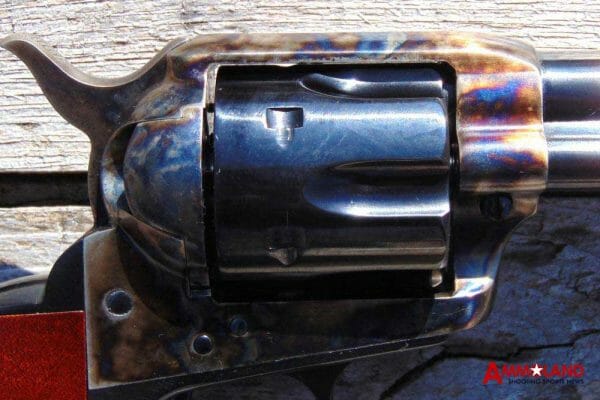

Overall for the price of the revolver, the Taylor’s & Company Cattleman Single Action Army clone is an excellent deal, especially if you want something different, like a gun in .32-20. I am a little perplexed as to why the gun doesn’t like Winchester rounds, especially since some in the same box bound up the cylinder and some didn’t, depending on the thickness of the rim of the cases. With factory ammunition being tough to get in some places, it might be a bit of a put-off if half the box of ammo can’t even be used.
The Colt Single Army is an iconic gun, and the Taylor’s & Company Cattleman is faithful to the original in every way. The fit and finish is excellent overall, and despite it’s little quirks with the Winchester ammunition, the gun is a joy to shoot, and in .32-20, you can have a round that is capable of taking small game and can be packed on the trail with no worries.
Live Inventory Price Checker

|
Uberti 1873 Cattleman Revolver Charcoal Blue 7.5" 345150 | EuroOptic.com | $ 759.50 |
|

|
Uberti Outlaws & Lawmen "Dalton" .45 Colt 5.5" 1873 Single Action Cattleman Revolver 356718 | EuroOptic.com | $ 1176.00 |
|

|
Uberti Bonney 1873 Cattleman 45 Colt - Bonney 1873 Cattleman 5.5 Blue Revolver | BattleHawk Armory | $ 929.00 $ 799.99 |
|
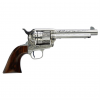
|
Taylor's & Co. Uberti 1873 Cattleman Photo Engraved Revolver .357 Magnum 5.5 inch Barrel 6 Rounds | Sportsman's Guide | $ 965.99 |
|
About David LaPell
David LaPell has been a Corrections Officer with the local Sheriff’s Department for thirteen years. A collector of antique and vintage firearms for over twenty years and an avid hunter. David has been writing articles about firearms, hunting, and western history for ten years. In addition to having a passion for vintage guns, he is also a fan of old trucks and has written articles on those as well.
